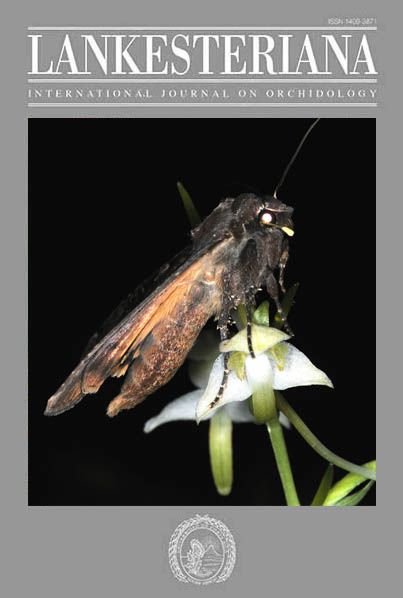Noctuid moths as potential hybridization agents for <i>Platanthera</i> orchids
DOI:
https://doi.org/10.15517/lank.v17i3.31576Abstract
Zoophilous flowering plants communicate with pollinators to ensure pollen transfer. Pin-pointing which species are effective pollinators is not only essential to better understand plant-pollinator networks, but equally so to better understand the potential of hybridization in plant systems, such as in orchids. As a case study, we studied two sympatric populations of the congeneric orchids Platanthera bifolia and P. chlorantha in order to assess their nocturnal pollinators by checking which moth species carried pollinaria, and of which orchid species. Moths carrying Platanthera pollinaria were photographed and identified. The carried pollinaria were identified and counted, and their attachment position on the moth’s head was scored. Based on these observations we show that three species of noctuid moths visited the Platanthera inflorescences. Although Noctua pronuba visited P. chlorantha, only Cucullia umbratica and Autographa gamma turned out to be potential pollinators for both orchid species. As such, we here demonstrate that the latter two noctuids have high potential to facilitate hybridization among these two orchid species, especially so in sympatric populations.
Downloads

Downloads
Published
How to Cite
Issue
Section
License
According to the Open Access policy promoted by the University of Costa Rica, all the papers published by Lankesteriana are licensed under the Creative Commons copyright and can be downloaded free of charge. The journal holds copyright and publishing rights under the CC BY-NC-ND 3.0 CR license.
Before the publication of the materials submitted by the author(s) in LANKESTERIANA, the author(s) hereby assign all rights in the article to the Lankester Botanical Garden.




